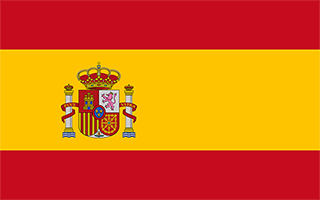Facts and Data
Webpages:
Official Unesco Page
Ciudades Patrimonio de la Humanidad de España
Ávila
World Heritage Sites in Spain (Tourist Office of Spain)
Ávila (World Heritage Cities of Spain)
Patrimonio de la Humanidad en España (in Spanish only)
Basis Data:
Unesco World heritage since: 1985
Size of heritage:
Coordinates:
Longitude: -3,300°
Latitude: 40,656°
Summary
Founded in the 11th century to protect the Spanish territories from the Moors, this 'City of Saints and Stones', the birthplace of St Teresa and the burial place of the Grand Inquisitor Torquemada, has kept its medieval austerity. This purity of form can still be seen in the Gothic cathedral and the fortifications which, with their 82 semicircular towers and nine gates, are the most complete in Spain.
Location on Map
Show bigger map on Openstreetmap
Old Town of Ávila with its Extra-Muros Churches
The Old Town of Ávila with its Extra-Muros Churches is a UNESCO World Heritage site located in the Province of Ávila, in the Autonomous Community of Castile-Leon, Spain. This historic city is renowned for its remarkably well-preserved medieval walls, which encircle the entire old town and provide a unique glimpse into the city's rich history.
The history of Ávila dates back to the Roman era, but it was during the Middle Ages that the city flourished. In the 11th century, Ávila became an important center of power and influence, particularly under the rule of the Catholic Monarchs, Ferdinand and Isabella. The construction of the city walls began in the 11th century and continued over the centuries, resulting in a formidable fortification that remains intact to this day.
The Old Town of Ávila is characterized by its well-preserved medieval architecture, with numerous churches, palaces, and other historic buildings dotting the narrow streets. The most iconic feature of the city is undoubtedly its walls, which stretch for 2.5 kilometers and are punctuated by 88 semicircular towers and nine gates. Walking along the top of the walls offers visitors breathtaking views of the city and its surroundings.
One of the highlights of the Old Town is the Ávila Cathedral, a magnificent Romanesque and Gothic structure that dominates the skyline. Construction of the cathedral began in the 12th century and continued for several centuries, resulting in a blend of architectural styles. The interior of the cathedral is equally impressive, with intricate stained glass windows, ornate altarpieces, and a beautiful choir.
Another notable feature of the Old Town is the Basilica of San Vicente, a Romanesque church that dates back to the 12th century. This basilica is dedicated to the martyrs Vincent, Sabina, and Cristeta and is considered one of the finest examples of Romanesque architecture in Spain. Its striking exterior, adorned with intricate sculptures and reliefs, is a testament to the skill and craftsmanship of the medieval builders.
The Old Town of Ávila with its Extra-Muros Churches is not only a testament to the city's medieval past but also a living, vibrant community. The historic center is home to a thriving population, with residents living in the same buildings that have stood for centuries. The city has managed to strike a delicate balance between preserving its heritage and adapting to modern needs, ensuring that Ávila remains a place where history comes alive.
Today, the Old Town of Ávila with its Extra-Muros Churches continues to attract visitors from around the world who come to admire its architectural beauty and immerse themselves in its rich history. The UNESCO World Heritage designation has helped to raise awareness of the city's cultural significance and has contributed to its preservation. Ávila stands as a testament to the enduring legacy of medieval Spain and serves as a reminder of the importance of preserving our shared heritage.
